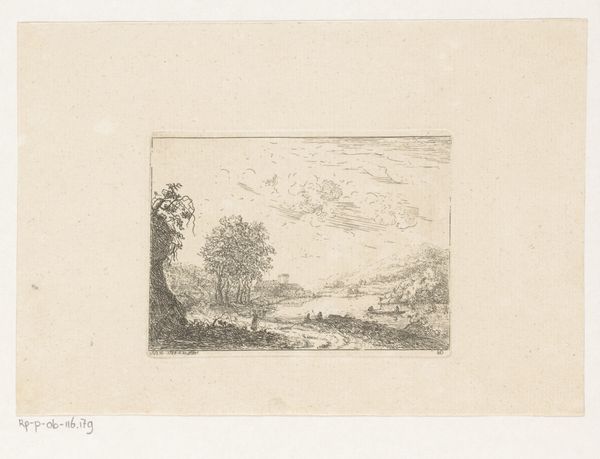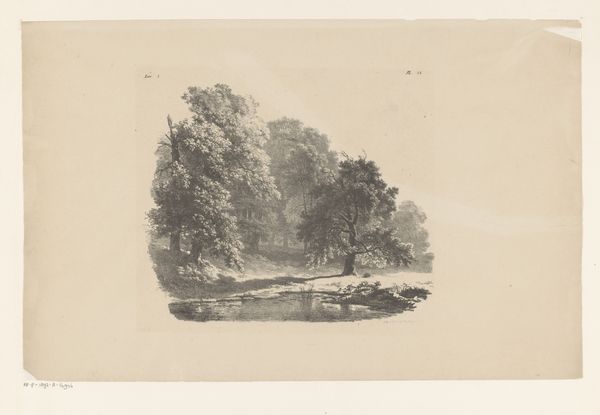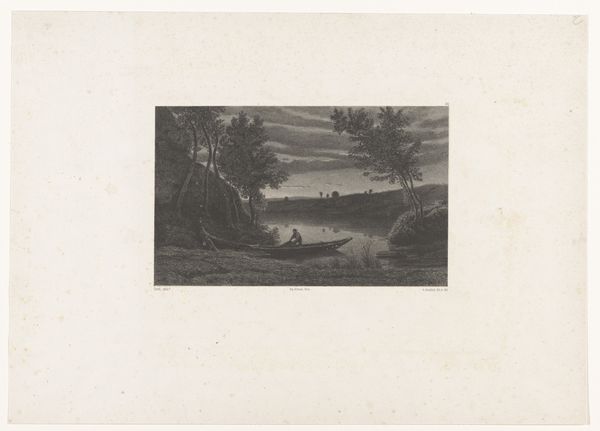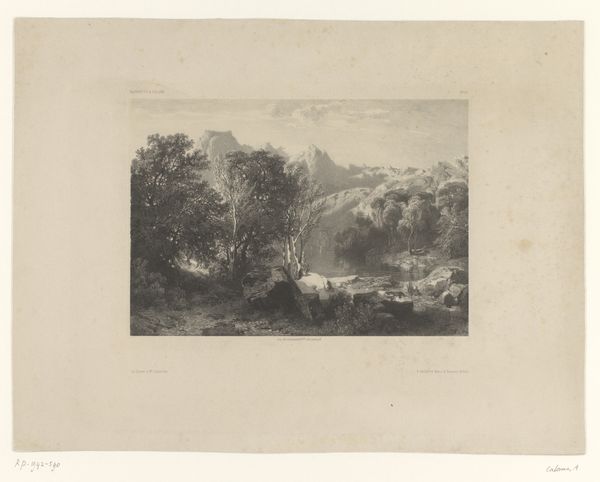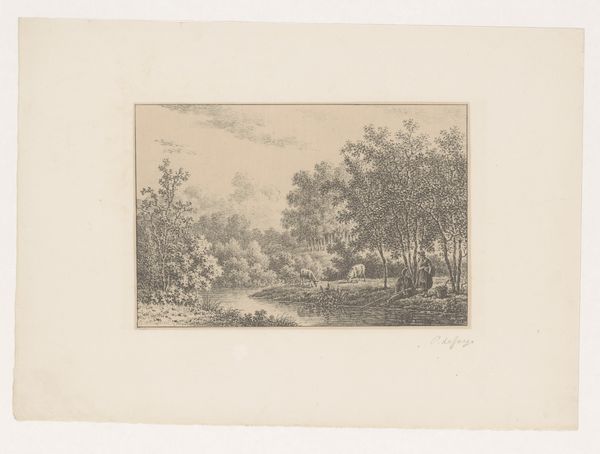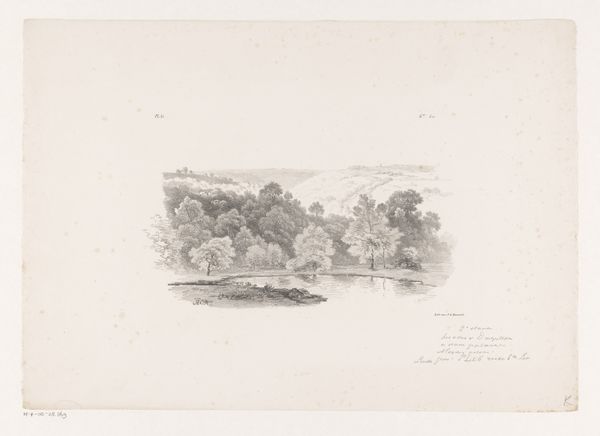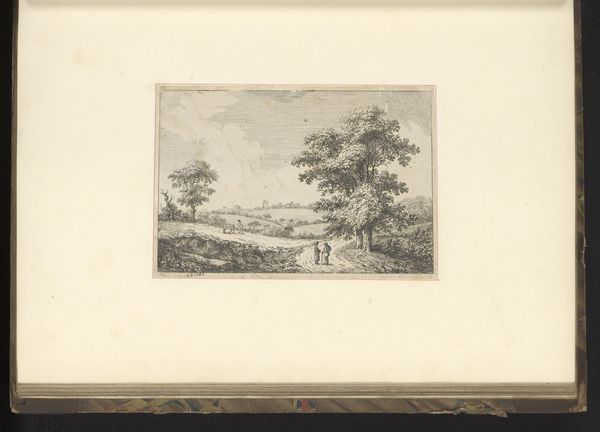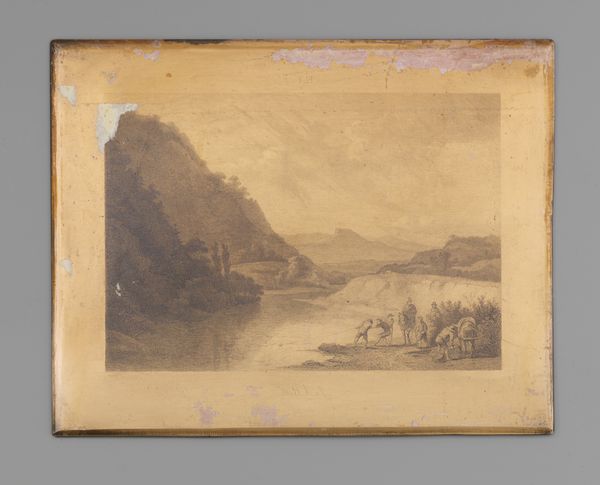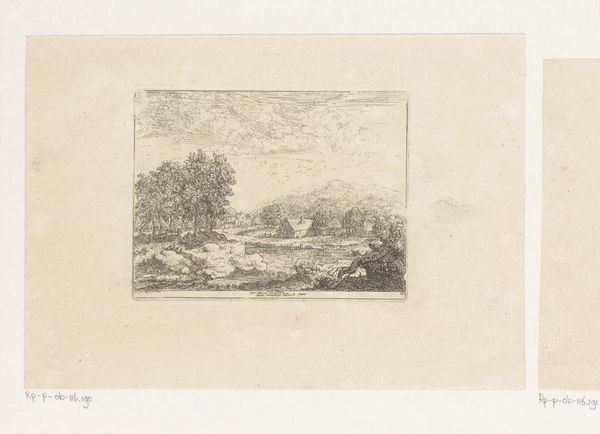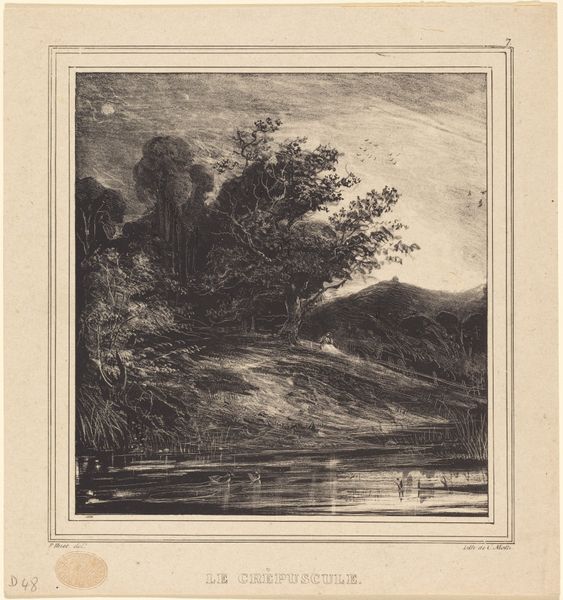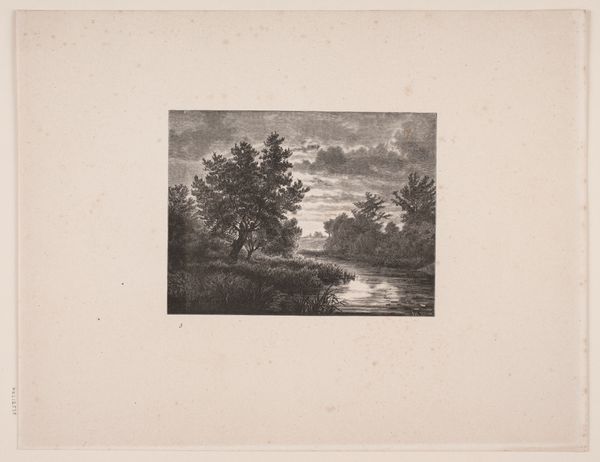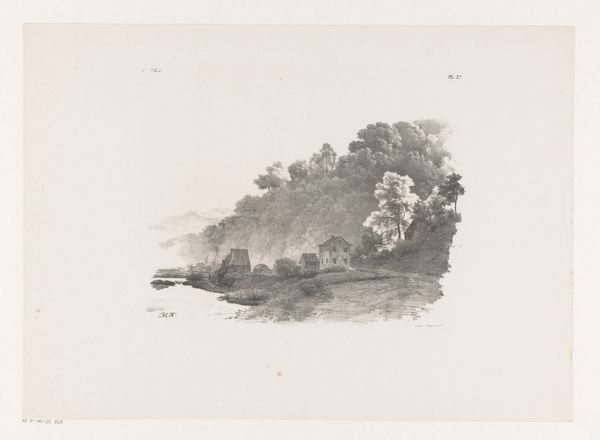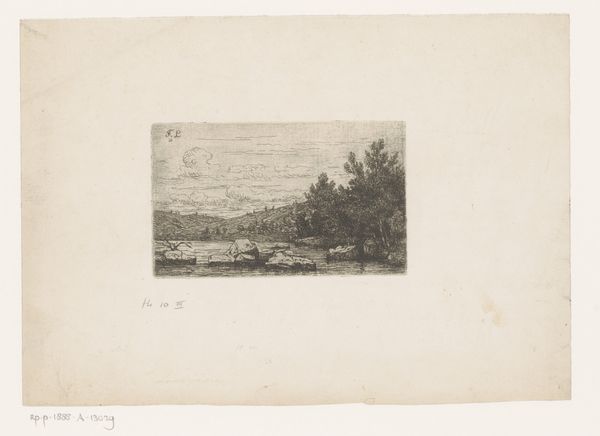
Dimensions: height 120 mm, width 183 mm
Copyright: Rijks Museum: Open Domain
Editor: Here we have Jacobus Nicolaas Tjarda van Starckenborgh Stachouwer’s "Meer tussen heuvels," created in 1853, using watercolor and drawing on paper. There’s a quietness to this landscape. It feels…untouched. How do you interpret this work? Curator: That perceived quiet, I think, can be deceiving. We must consider the context of the Dutch landscape tradition in the 19th century. It wasn't just about pretty scenery. Ask yourself, whose land is this *really*? Consider the rise of Romanticism at this time, this longing for "untouched" nature was often entangled with colonial aspirations and dispossession. Do you notice the lone figures within the landscape? Editor: I see them! A few tiny people by the water. It emphasizes the scale and grandeur of nature, right? Curator: Partly. But also, consider those figures within the frame of rapidly industrializing society. Were they meant to evoke feelings of pastoral nostalgia that would detract from issues of poverty and inequality experienced by rural peasants? I find myself wondering if the painting unconsciously served as a visual balm for the anxieties of the Dutch ruling class? Editor: I never considered that! So the “untouched” quality could be hiding complex social messages? Curator: Precisely. It reminds us that landscape art is never truly neutral. What choices does the artist make in terms of perspective, composition, and scale, and to what end? What is deliberately included and what is excluded from view? Who benefits from how nature is presented? Editor: This definitely changes how I see these landscape paintings. I am wondering whether Romanticism inadvertently perpetuated some oppressions while trying to offer an escape. Curator: Indeed. These works require constant questioning and critical engagement.
Comments
No comments
Be the first to comment and join the conversation on the ultimate creative platform.
